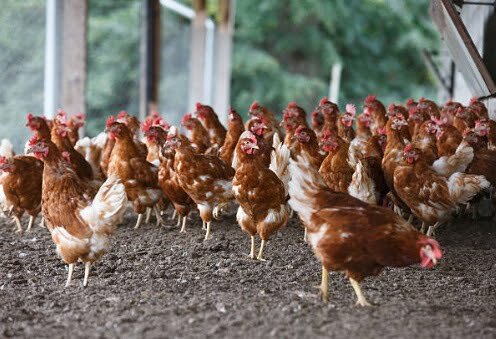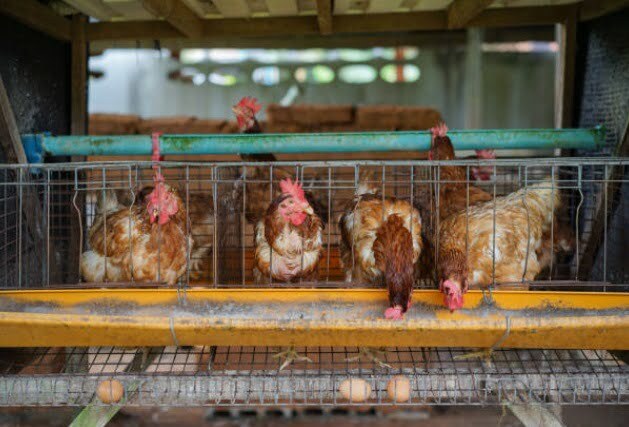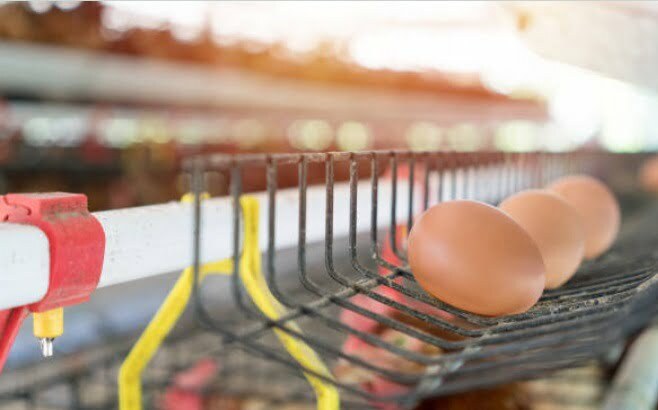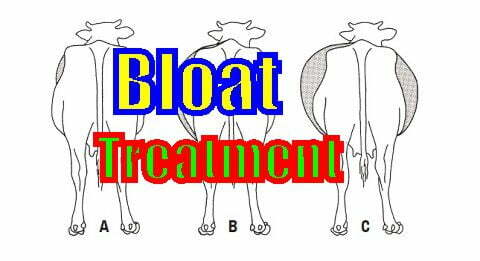How to increase egg production in Hens can broadly be grouped into two major things. The first is on the success of producing eggs on time and second, the efficiency of egg production.
First of all, the hens must be able to lay eggs first. Laying eggs should also be on time and have high uniformity. That way, the production target can be pursued.

For that, basic but very important in increasing the production of laying hens are:
- pullet quality
- quality feed and drink
- lighting
- Not stressed.
Table of contents
Pullet quality
The quality of the pullet seems to be a matter of subjectivity. But this is important and we can know by exchanging insights with experienced breeders.
However, there are standards for quality pullets, or parameters that can be used as benchmarks, namely:
- The weight hens on target and it’s uniform. The uniformity value must be more than 85%. The target weight according to the age of the chicken can be seen here.
- Production age between 18-90 weeks.
- Weight 2 kg.
- 94% vitality.
- Hen day 50% at 144 days
- Peak production 95%
- Egg weight average 62,9 grams
- FCR 2.1.
Quality Layer Chicken Feed

- Chicken feed must be of good quality and appropriate in quantity. It can’t just be big and heavy chicken. If the weight turns out to be due to too much fat, the effect will be negative for egg production.
- A good feed is not only for pursuing the target weight, because the nutrients from the feed are also needed for egg production.
- If the egg weight decreases, the total production will also decrease. Because the eggs are light.
- In addition to the adequacy of the value of crude protein, fat, crude fiber and vitamins, which are no less important are elements of calcium (Ca) and phosphorus (P). The need for calcium during production is even more.
The ideal comparison between Ca and P elements in the ration can be seen in the table below.
| Laying Hens Phase | Ca | P |
| Starter | 2 – 2.5 | 1 |
| Grower | 2 – 2.5 | 1 |
| Pre Layer | 5 | 1 |
| Layer | 9 – 12 | 1 |
Laying Hens Can’t be stressed
How to increase egg production in hens are do not let hens stressed out. Stress can decrease egg production.
Things that can make laying hens stressed are:
- weather changes (hot/cold),
- move location,
- rough treatment
- parasite attack
- Noise
The stress triggers above can interfere with the egg shell formation process.
Laying hens can’t get sick
One of the most basic ways to increase the production of laying hens is that the chickens should not be infected with disease.
There are several diseases whose attacks can interfere with the reproductive organs of chicken eggs. These diseases are:
- ND (Newcastle Disease)
- AI (Avian Influenza)
- IB (Infectious Bronchitis) and
- EDS (Egg Drop Syndrome)
ND attacks make the ovaries shrink, the egg membranes swell and bleeding occurs.
AI virus causes damming in the blood vessels in the ovaries and damage to the surface of the ovary at the time of budding exit.
EDS disease also causes the brown color of the egg shell to disappear, followed by a thin, soft and no shell.
In addition, cases of egg yolk rupture are often found in the abdominal cavity. Cases of cystic oviduct also further increase the severity of IB attacks. In terms of the quality of the eggs produced, the case of IB causes the color of the eggs to become paler, the size of the eggs to be smaller, the egg whites to be runny, the shells to be thin and break easily.
How to Increase egg production in hens with efficiency
Lighting

Layers that have entered the egg production period, need 16 hours of lighting (12 hours of sunlight and 4 hours of light) to maintain optimal egg production.
The lighting factor during the pullet period is also closely related to the achievement of weight, egg size and reproductive tract maturity.
That’s standard lighting. I have post about this light that increase egg production in hens, but it is not in english yet.
Supplements to increase egg production in chickens

The price of feed always goes up, even though the price of eggs goes up and down. Indeed, this phenomenon cannot be faulted.
To be able to face the challenges above, the key is in the effectiveness or not of our laying hens’ egg production.
It can be effective at low feed conversion or no disease and stress that interfere with our laying hens.
This is where the role of supplements can be optimized to increase the effectiveness of laying hens production.
Examples of supplements that can be used to increase the production of laying hens are probiotics. Probiotics are very affordable, we can even make our own.
Benefits of probiotics for laying hens
With the right amount of feeding, probiotics can provide very good benefits for laying hens. Probiotics can suppress the proliferation of harmful bacteria or pathogens.
Examples of bacteria that can do this are lactic acid bacteria such as Lactobacillus sp. Bacillus sp bacteria can make protein more easily absorbed by the body.
With nutrients that can be more easily absorbed, this can make chickens healthier and their immune systems stronger.
In brief, some of the benefits that can be obtained by giving probiotics are as follows.
- Probiotics can increase growth and feed efficiency.
- Prevents intestinal inflammation and diarrhea.
- Increase the production and quality of chicken eggs.
- The use of probiotics is almost without side effects.
- The price is cheaper.
- Inhibits the proliferation of harmful bacteria.
How to increase egg production in hens with probiotics
Probiotics that can be used are lactobacillus acidophilus.
This probiotic test was carried out on 192 laying hens. Then grouped into four groups.
Each group was given a different level of probiotics. As a control, the first group was only given feed, without probiotics.
The second, third and fourth groups were given probiotics with levels of 0.67%, 2% and 4%, respectively.
Briefly, the results can be read in the table below.[1]
| Probiotics | 0% | 0.67% | 2% | 4% |
| Egg production % | 77.2 | 76.9 | 80.7 | 85.2 |
| feed consumtion (grams/day/head) | 122.3 | 121.0 | 123.8 | 122.6 |
| FCR | 2.7 | 2.6 | 2.5 | 2.3 |
| Egg Weight (grams) | 62.2 | 62.4 | 62.2 | 62.3 |
| Eggshell Thickness (mm) | 0.38 | 0.38 | 0.38 | 0.38 |
From the above results, probiotics greatly affect FCR. Thus, feed conversion becomes more efficient.
That means, more nutrients are utilized by chickens, so egg production is higher.
Thats how to increase egg production in hens. I hope it be usefull. Thank you.
Reference
HADDADIN, M.S.Y., S.M. ABDULRAHIM, E.A.R. HASHLAMOUN and R.K. ROBINSON. 1996. The effect of Lactobacillus acidophilus on the production and chemical composition of hen eggs. Poultry Sci. 75: 491−494.
 JOYNIM FARM Goat Farming, Cattle Farm, Laying Hens, Quail Farm, Gardening
JOYNIM FARM Goat Farming, Cattle Farm, Laying Hens, Quail Farm, Gardening

